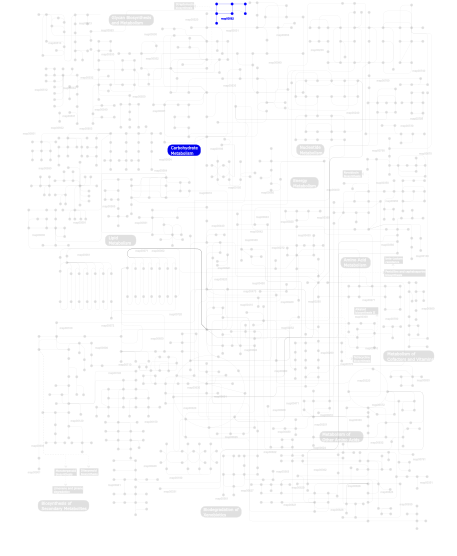The domain within your query sequence starts at position 4 and ends at position 56; the E-value for the LIM domain shown below is 6.95e-14.
QCARCGKVVYPTEKVNCLDKYWHKGCFHCEVCKMALNMNNYKGYEKKPYCNAH
LIMZinc-binding domain present in Lin-11, Isl-1, Mec-3. |
|---|
| SMART accession number: | SM00132 |
|---|---|
| Description: | Zinc-binding domain family. Some LIM domains bind protein partners via tyrosine-containing motifs. LIM domains are found in many key regulators of developmental pathways. |
| Interpro abstract (IPR001781): | This entry represents LIM-type zinc finger (Znf) domains. LIM domains coordinate one or more zinc atoms, and are named after the three proteins (LIN-11, Isl1 and MEC-3) in which they were first found. They consist of two zinc-binding motifs that resemble GATA-like Znf's, however the residues holding the zinc atom(s) are variable, involving Cys, His, Asp or Glu residues. LIM domains are involved in proteins with differing functions, including gene expression, and cytoskeleton organisation and development [ (PUBMED:1970421) (PUBMED:1467648) ]. Protein containing LIM Znf domains include: Zinc finger (Znf) domains are relatively small protein motifs which contain multiple finger-like protrusions that make tandem contacts with their target molecule. Some of these domains bind zinc, but many do not; instead binding other metals such as iron, or no metal at all. For example, some family members form salt bridges to stabilise the finger-like folds. They were first identified as a DNA-binding motif in transcription factor TFIIIA from Xenopus laevis (African clawed frog), however they are now recognised to bind DNA, RNA, protein and/or lipid substrates [ (PUBMED:10529348) (PUBMED:15963892) (PUBMED:15718139) (PUBMED:17210253) (PUBMED:12665246) ]. Their binding properties depend on the amino acid sequence of the finger domains and of the linker between fingers, as well as on the higher-order structures and the number of fingers. Znf domains are often found in clusters, where fingers can have different binding specificities. There are many superfamilies of Znf motifs, varying in both sequence and structure. They display considerable versatility in binding modes, even between members of the same class (e.g. some bind DNA, others protein), suggesting that Znf motifs are stable scaffolds that have evolved specialised functions. For example, Znf-containing proteins function in gene transcription, translation, mRNA trafficking, cytoskeleton organisation, epithelial development, cell adhesion, protein folding, chromatin remodelling and zinc sensing, to name but a few [ (PUBMED:11179890) ]. Zinc-binding motifs are stable structures, and they rarely undergo conformational changes upon binding their target.
These proteins generally contain two tandem copies of the LIM domain in their N-terminal section. Zyxin and paxillin are exceptions in that they contain respectively three and four LIM domains at their C-terminal extremity. In apterous, isl-1, LH-2, lin-11, lim-1 to lim-3, lmx-1 and ceh-14 and mec-3 there is a homeobox domain some 50 to 95 amino acids after the LIM domains. LIM domains contain seven conserved cysteine residues and a histidine. The arrangement followed by these conserved residues is:
LIM domains bind two zinc ions [ (PUBMED:8506279) ]. LIM does not bind DNA, rather it seems to act as an interface for protein-protein interaction. |
| Family alignment: |
There are 113896 LIM domains in 51102 proteins in SMART's nrdb database.
Click on the following links for more information.
- Evolution (species in which this domain is found)
- Cellular role (predicted cellular role)
- Literature (relevant references for this domain)
- Disease (disease genes where sequence variants are found in this domain)
- Metabolism (metabolic pathways involving proteins which contain this domain)
- Structure (3D structures containing this domain)
- Links (links to other resources describing this domain)



































































